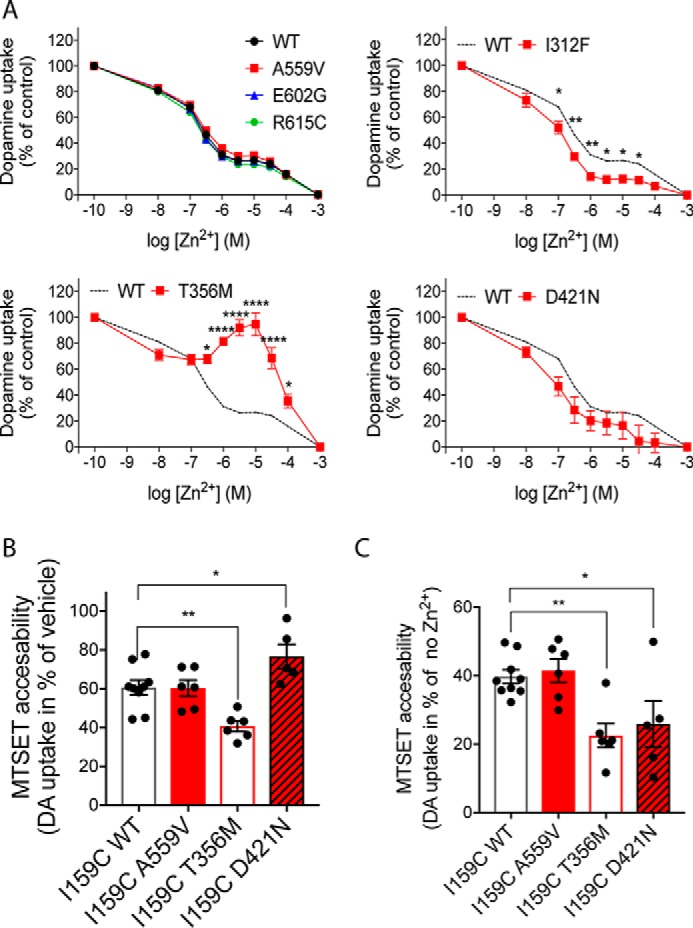Figure 5.

Conformational changes imposed by disease-associated variants. Conformational changes in disease-associated DAT variants were evaluated in transiently transfected COS-7 cells by assessing Zn2+ responses and MTSET accessibility. A, [3H]dopamine (DA) uptake was performed for 10 min (room temperature) in the presence of indicated Zn2+ concentrations. Data are presented as mean ± S.E. from three experiments, each performed in triplicates and normalized to uptake in the absence of Zn2+. *, p < 0.05; **, p < 0.01; ****, p < 0.0001, multiple t test with Holm-Sidak correction for multiple comparisons. B, MTSET accessibility assessed by treating COS-7 cells, expressing the indicated cysteine-engineered constructs, with vehicle or 0.5 mm MTSET prior to performing [3H]dopamine uptake. MTSET accessibility is reported as the MTSET-induced inhibition of uptake (in % of vehicle). E2C–I159C/T356M is more sensitive to MTSET than E2C–I159C–DAT WT, whereas E2C–I159C/D421N is protected from MTSET-induced inactivation. We could not obtain specific dopamine uptake from E2C–I159C/I312F even in absence of MTSET. C, Zn2+-imposed conformational changes in the variants were evaluated from MTSET-dependent inactivation of [3H]dopamine uptake following a 5-min treatment with 10 μm Zn2+ versus vehicle. Zn2+ increased MTSET accessibility for both E2C–I159C–DAT WT and coding variants, but the Zn2+-dependent increase in MTSET accessibility was significantly larger for E2C–I159C/T356M and E2C–I159C/D421N than for E2C–I159C–DAT WT. *, p < 0.05; **, p < 0.01 (n = 5–9, one-way ANOVA with Dunnett's post hoc test).
